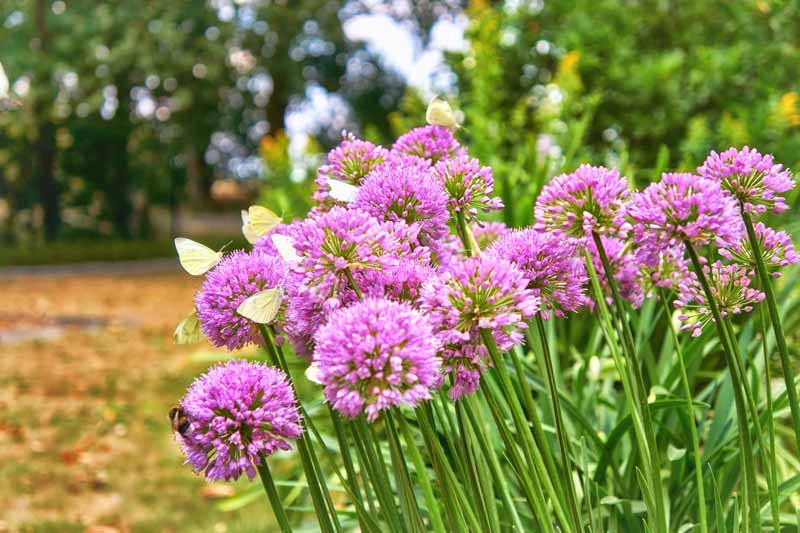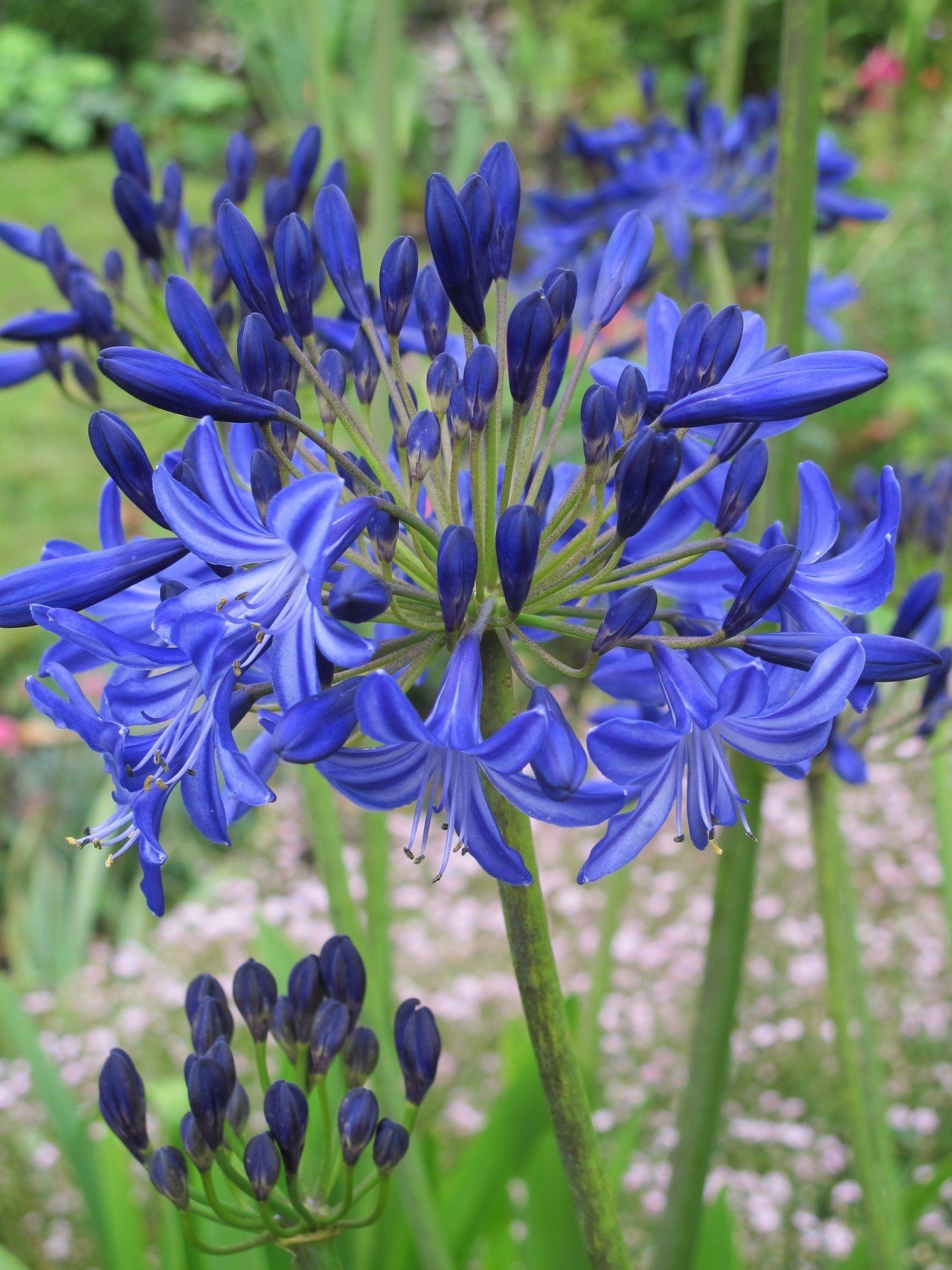Just how to Plant and Maintain Agapanthus in Your Garden
Just how to Plant and Maintain Agapanthus in Your Garden
Blog Article
Mastering the Art of Agapanthus Treatment: Important Steps for Healthy And Balanced Growth and Vivid Blossoms
In the world of gardening, the growing of agapanthus stands as a gratifying venture for those who seek to support these sophisticated flowering plants. From selecting the appropriate range to understanding trimming techniques, the trip towards growing growing agapanthus plants is complex and holds the vital to opening the complete possibility of these organic treasures.

Choosing the Right Agapanthus Selection

When picking the appropriate Agapanthus selection for your garden, think about factors such as environment suitability, flower shade, and development practice. In addition, take into consideration the environment in your area to guarantee the Agapanthus range you pick can thrive in your details conditions. Understanding the development routine of different Agapanthus varieties is vital for appropriate placement within your yard.
Ideal Growing Conditions
Thinking about the optimum ecological needs is crucial for successful Agapanthus farming. Agapanthus thrives in well-draining soil with a slightly acidic to neutral pH level. When planting, choose a location that receives complete sunshine to partial shade. In hotter environments, giving some afternoon shade can protect against scorching of the fallen leaves. Agapanthus plants are delicate to cool temperatures and ought to be protected from frost during cold weather.
To guarantee healthy development and vivid flowers, plant Agapanthus light bulbs at a deepness of about 2-4 inches and space them 8-12 inches apart. Adding raw material, such as compost, to the soil can improve water drainage and fertility, advertising robust origin growth. Mulching around the base of the plants assists preserve dampness and subdues weed growth. Routine watering is crucial, especially during the expanding season, to maintain the soil regularly moist yet not waterlogged.
Watering and Feeding Tips
Keeping proper moisture levels and providing necessary nutrients are essential elements in the care program for Agapanthus plants. When it comes to sprinkling Agapanthus, it is essential to strike a balance. These plants prefer consistently wet dirt however are at risk to root rot if overwatered.
Feeding Agapanthus is essential for promoting healthy and balanced development and respected blooms. Apply a well balanced plant food, such as a 10-10-10 formula, in the early springtime as brand-new development emerges. Repeat this application every 6-8 weeks throughout the growing season. Stay clear of excessive fertilization, as it can bring about lavish vegetation at the expenditure of blossoms. Constantly follow the maker's guidelines for appropriate dilution great site and application methods. By adhering to these watering and fertilizing suggestions, you can guarantee your Agapanthus plants prosper and create vivid, long-lasting blossoms.
Pruning Techniques for Agapanthus
Trimming Agapanthus plants at the ideal times and with proper techniques is vital for keeping their wellness and advertising optimal growth and flowering. The perfect time to trim Agapanthus is in late winter months or early springtime prior to brand-new development arises.
For flowered stems, wait up until the blossoms have withered and after that cut them back to the base. This not only cleans up the plant's look however likewise urges the growth of brand-new flower buds. Deadheading invested flowers can likewise redirect the plant's power into creating even more blooms as opposed to establishing seeds. However, if you intend to collect seeds for propagation, leave some blossoms to dry and mature on the plant.
Keep in mind to make use of tidy, sharp devices to make precise cuts and minimize the risk of presenting conditions. Agapanthus. Routine trimming will certainly help keep your Agapanthus looking cool and healthy while making sure a bountiful display screen of attractive blossoms
Taking Care Of Usual Pests and Illness
After making sure appropriate pruning methods for Agapanthus, it is vital to deal with usual bugs and conditions that can affect the wellness and vitality of these plants. Agapanthus plants are usually hardy however can still succumb to specific concerns. One common parasite that impacts Agapanthus is the Agapanthus gall midge. This small, orange fly lays its eggs in the foliage, leading to distorted development and flower buds that fall short to open up. To combat this insect, trim and ruin any damaged plant parts and consider using insecticidal soap.
Additionally, Agapanthus plants can suffer from origin rot if they are planted in inadequately draining pipes dirt. By being cautious and taking timely activity versus parasites and diseases, over here you can help your Agapanthus plants thrive and create dynamic blossoms. Agapanthus.

Conclusion
In final thought, grasping the art of agapanthus care includes picking the ideal range, supplying ideal planting problems, correct watering and feeding, proper pruning strategies, and dealing with usual bugs and diseases. By adhering to these essential steps, you can ensure healthy growth and dynamic flowers for your pop over to these guys agapanthus plants. Bear in mind to routinely check and keep your plants to promote their total health and long life.
To ensure healthy development and vivid blossoms, plant Agapanthus light bulbs at a deepness of regarding 2-4 inches and space them 8-12 inches apart. By complying with these watering and fertilizing pointers, you can ensure your Agapanthus plants prosper and generate lively, lasting blooms.
One common parasite that impacts Agapanthus is the Agapanthus gall midge. Furthermore, Agapanthus plants can endure from origin rot if they are grown in poorly draining soil. By adhering to these crucial actions, you can ensure healthy and balanced development and dynamic blooms for your agapanthus plants.
Report this page